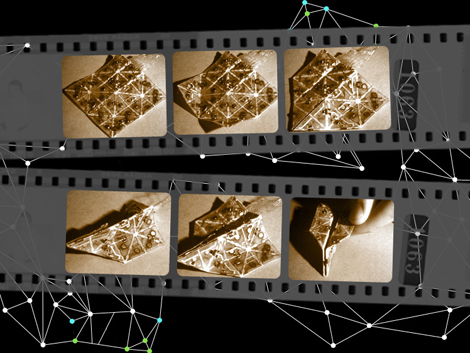Posted on September 22nd, 2010 by axb

Human skin is extraordinarily sensitive – our fingertips can perceive extremely small differences in pressure, texture, and temperature. Mimicking this ability artificially is a real technological challenge, but fortunately electrical engineers at Stanford and UC Berkeley seem to be up to the task.
At Stanford, a team led by chemical engineering professor Zhenan Bao has developed an artificial skin that is reportedly over 1,000 times more sensitive than its human counterpart. It consists of a thin rubber material placed between two parallel electrodes. When an object touches the skin and compresses the rubber, the surrounding electrodes register this pressure and convert it to electrical signals.
Read More
Filed under: Biomedical, Chemical, e-News, Electrical, Materials | Comments Off on Engineering Artificial Skin
Tags: Biomedical, Chemical, Electrical, Materials, Nanotechnology, Robotics
Posted on September 19th, 2010 by axb

Winter temperatures in Astana, the new capital of Kazakhstan, are extremely frigid, averaging around negative 31 degrees Fahrenheit. But in summer, the mercury regularly soars to a sizzling 95 degrees. So when top British architect Norman Foster designed Astana’s newly-opened Khan Shatyr Entertainment Center, he opted for a unique energy-efficient material that would accommodate both seasonal extremes.
Read More
Filed under: Architectural, e-News, Environmental, Materials | 9 Comments »
Tags: Architectural, Environmental, Materials
Posted on August 15th, 2010 by jxh

Biomimicry is back again, and this time butterflies are the source of imitation.
The Morpho butterfly possesses acute chemical-sensing abilities thanks to nano-level structures underneath the colorful scales on its wings.
The submicroscopic structures can pick up even the smallest trace of airborne chemicals and the exposure changes the spectral reflectivity of the butterfly’s wings.
Read More
Filed under: Chemical, e-News, Materials | 2 Comments »
Tags: Biomimicry, Chemical, Defense, Materials, Nanotechnology
Posted on August 8th, 2010 by axb

Here’s some good news for all the Transformers fans out there: researchers at Harvard and MIT have been busy creating new smart material that can change its shape on command. Called “programmable matter by folding,” this nifty robotics project involves wiring flexible alloys and programming them to fold themselves into origami-like shapes.
The current prototype can fold itself into a boat or an airplane depending on the signal it receives – watch in this video [after the jump]:
Read More
Filed under: Computer, e-News, Electrical, Materials, Mechanical | 1 Comment »
Tags: Computer, Electrical, Materials, Mechanical, Robotics
Posted on August 4th, 2010 by jxh
 When you see a spider, your first inclination may be to step on it, or scream and run away.
When you see a spider, your first inclination may be to step on it, or scream and run away.
But engineers would do the opposite, as they are trying to unlock one of nature’s greatest mysteries: a spider’s ability to produce silk.
Read More
Filed under: Biomedical, Chemical, e-News, Environmental, Materials | 1 Comment »
Tags: Biomedical, Biomimicry, Chemical, Materials













 When you see a spider, your first inclination may be to step on it, or scream and run away.
When you see a spider, your first inclination may be to step on it, or scream and run away.